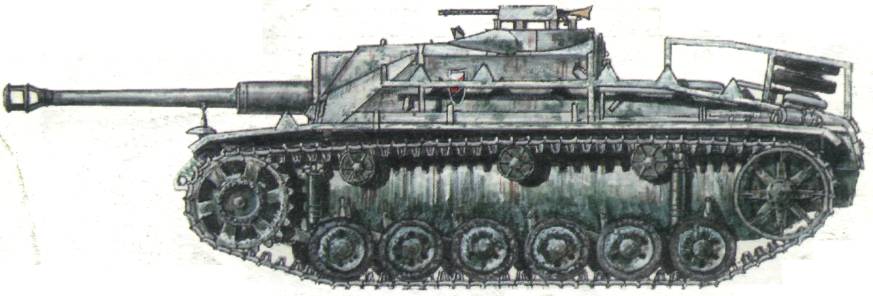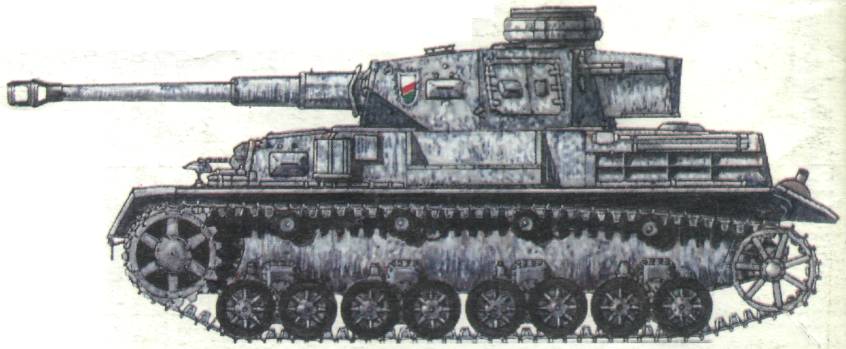Part I – http://ftr.wot-news.com/2013/07/15/bulgarian-armor-part-i/
After the Jambol excercise – which, despite all the hard work – was partially unsuccessful (especially the performance of the Renault tanks was abysmal, but some Š-35 tanks bogged down during the rainy march from Nova Zagora), efforts were made to improve the state of Bulgarian armor. In 1942, the chief of Bulgarian army command operative division, general Chaladzhov, personally went to Germany in order to learn about the German armored unit structure and tactics, in order to implement the things the Germans learned in war into the Bulgarian army.
The report he made was known as Plan 43 and it counted on improving the Bulgarian army by adding many more armored vehicles. The Bulgarian Armored regiment was also planned to recieve (apart from new tanks) more trucks and artillery tractors, which proved crucial for the infantry and support staff to keep pace with the tanks.
In 1942, further excercises were held and the new German supply system (the one Plan 43 suggested) was trained near Breznik. The result of the excercise was that while effective by itself, the German system actually counts on the unification of various vehicle types and doesn’t do well in armies, where many various vehicle types are used. Further army armored unit restructuring was also suggested by Chaladzhov (to effectively copy the structure of the German Panzerdivisions) and as a result of these experiences, the Bulgarian army sought to unify their armored vehicles with the Germans, believing that was the only way to make them effective – therefore, the Bulgarians sought to buy various German vehicles, including 90 Panzer IV’s (later increased to 95), 55 self-propelled guns, 25 training Panzer I tanks and 10 Panzer III tanks.
The Germans declined such an order first, but after some negotiations, they did promise to gradually help the Bulgarian army to re-arm, based on the Bulgarian request (mostly for political reasons, more German technology and advisors meant more influence on Bulgarian politics). The first German vehicles of the aforementioned order arrived in February 1943 – five StuG III Ausf.G (with 75mm L/43 cannons).
They were redesignated as SO-75 (“samokhodno orudie” – self-propelled gun), or StuG 40. Basically, the Germans did keep the arming schedule until like December 1943 (but the circumstances were quite different then). Germans did sell Bulgaria further 10 vehicles in March and April and after that there were 4 more batches (10 vehicles each), so by December 1943, when the order was finished, Bulgaria operated 55 StuG III. Throughout the year, two Self-propelled gun batallions were created (one stationed in Sofia, one in Plovdiv (other sources state Khaskovo)) – the batallion structure consisted of a HQ unit and three assault gun batteries. Each battery had three platoons and each platoon had 2 vehicles. Furthermore, each battery operated one command vehicle with improved radio. The SO-75′s remained active in the Bulgarian army until mid 50′s, when they were finally phased out. On following picture is the 1st Batallion (Sofia) StuG 40, operating in Hungary, January 1945:
The Bulgarian army – as mentioned above – also ordered certain number of Panzer IV vehicles. The ordered 46 Panzer IV’s arrived in Bulgaria on 3.9.1943. The Bulgarians called them “Majbakh T-IV” (cyrillic transcription of the Maybach company name, that produced them). 46 was all the Germans could spare (Matev however states 97 were obtained, 46 is more likely however), despite the order counting on the double of that. It’s not really clear, what type of the vehicles were they – most sources (Ivanov, Matev) state it was Ausf.G, while other sources (Pejčoch) state some were Ausf.H (Ausf.G is much more likely). Either way, these tanks would continue to serve until early 50′s, when they were replaced by the T-34/85. Here is a drawing of an Ausf.G Panzer IV, serving in Yugoslavia in December 1944:
Here, an undiclosed Panzer IV in Bulgarian service
As for the ordered Panzer I’s and III’s however, Germans informed Bulgaria that they can’t deliver them. Instead of the Panzer III tanks, Bulgarians got offered something else: 10 Panzer 38t) – and instead of the Panzer I training tank, captured French vehicles were offered: specifically 19 Hotchkiss H-39 and 7 Somua S-35 tanks.
Praga P-38
On 20.5.1943, the Vienna Arsenal did permit the ČKD (BMM) company to transfer 10 Panzer 38t of various types (currently being repaired in factory) – specifically it was 2 command tanks with both FuG 5 and FuG 2 radios, three FuG 5-only tanks and two FuG 2-only tanks. The Bulgarians paid for the tanks, ammo and some spare parts 1.471.812 RM (147181 RM per piece – to compare: the price for StuG III Ausf.G was 82500 RM, for Panzer IV it was 116000 RM, for a Tiger it was 250800 RM).
The Bulgarians renamed the vehicle to “Lek Tank Praga P-38″ (Light tank Praga P-38), but it was generally referred to just as “Praga”. The army used them operationally until March 1945, when the remaining vehicles were redesignated as support and training due to the lack of spare parts. They actually survived as training vehicles until early 50′s. This vehicle served in Sofia in 1944:
This time, Bulgarians were not so easily duped: they knew now first-hand of the abysmal performance of the French tanks (and they knew from other German allies, how great Germans are at dumping obsolete stuff on them – see Romanian experience) and their first answer to the Germans was a big “go screw yourself with that shit”. Germany however effectively strong-armed them into accepting the French tanks. In order not to make the relationship with Bulgaria worse than it was however, Germany decided to throw in 20 light Sdkfz 222 and 223 in as a bonus.
To be continued…







Awesome! Thank you!
I’m actually going to visit Ямбол (Jambol) and check the tanks out with my own two eyes the coming weekend.
It kind of makes me sad that some asshats illegally sold most of these tanks.
I honestly never knew we had that many German tanks and had the impression drilled in my mind that most of our tanks were indeed USSR vehicles. I guess communism is to blame for losing these wonderful pieces of German engineering.
The Italians got a better deal from the Germans, they sent over decent French tanks at least, 32 SOMUA S35s
Apparently they were not very liked anyway, in part because of lacking spare parts and ammo.
Yes they were used for training entirely, I assume some ended up cannibalised to fix other S35s. On the other hand Italy ended up with 124 Renault R35s which were used anaemically in the defence of Sicily.
Ironically they were used in some skirmishes against the Germans after the armistice, after that they were returned to Free France.
I was referring to the S35s in Sardinia, of course.
Great articles! This is becoming one of the great sites :)
Definitely it is very interesting to read such type of articles! Keep up the good work :)
Panzer 38t: 147.181 RM
StuG III Ausf.G: 82.500 RM
Panzer IV: 116.000 RM
Tiger 1: 250.800 RM
Who in their right mind would pay so much for a P38t?
Lets have a look at what you could get for your money (relative numbers)
40 Tigers
86 Pz IV
121 Stug III
68 P38t
Who would go for the P38t at that price LOL
Someone in “take it or leave it, but we have several hundred thousand soldiers in your country” position.
SS… i cant add anything about info, but i’ve got one drawing of Bulgarian Pz.4 Ausf. H (we didnt had any Ausf. G). It would be nice to replace this Yugoslavian Pz.4 :)
http://img199.imageshack.us/img199/9171/4n1k.jpg
I think I can get some more info and drawings of bulgarian camo on pz4s… I will write to you later tonight :-)
The thing about Bulgarian armor being neglected by literature is perhaps because they were using essentially the same tanks? You could make a case for neglecting operations etc but the armor is essentially the same no?
Still interesting to read about the history of it though don’t get me wrong.
We were too lazy to make our own so we just bought em’ :D
We could organize a field trip to the Museum of Military History in Sofia and take some nice pictures of the vehicles there (If there is interest). Besides PZs and a STUG, there is also a JagdpanzerIV there I believe. Regrettably, nothing has camo paint on it, only regular “army green” vehicles are left.
Well i think that Museum of Military History in Sofia is crap. I mean most of the vehicles are just left ot rust there, they have many many missing parts, and not to forget that the director of the museum is a stupid female which doesnt care about military at all…. Just remember the flag of 7th SS Division Prinz Eugen which was stolen last month…stolen from a museum which is guarded by the almighty military police…
Ok, might be just me but isnt the flag on the Pz IV wrong? The Bulgarian flag is white then green then red. The flag in the picture is red then green
Pingback: Sofia Military Museum pictures | For The Record